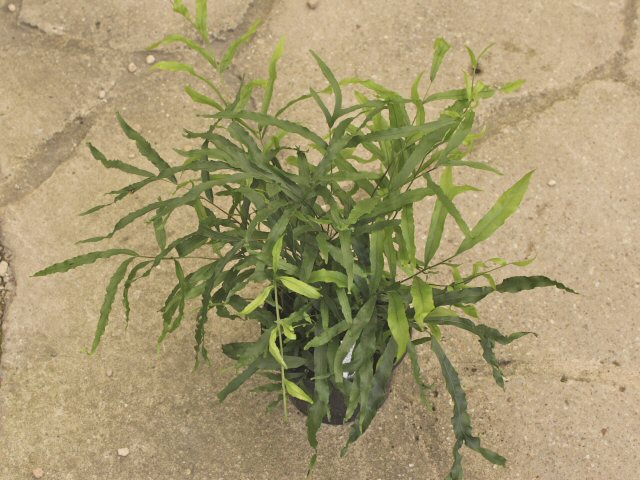Array
(
[0] => Array
(
[id] => 525
[is_published] => 1
[websiteID] => 5
[url] => /gardening/how-to-prune-a-hedge-in-7-simple-steps.php
[page_status] => Published
[number_of_ads] => 3
[can_use_editor] => 1
[last_modified_date] => 2013-09-16 00:00:00
[last_modified_by] => Alan
[checked_for_duplicate_content] =>
[title] => How to prune a hedge in 7 simple steps
[heading] => How to prune a hedge in 7 simple steps
[meta_description] => This article explains how to prune a hedge in 7 simple steps.
[article_category_1] => Gardening
[article_category_2] =>
[article_category_3] =>
[article_category_4] =>
[article_category_5] =>
[business_category_1] => Landscaper
[business_category_2] => Garden Maintenance
[business_category_3] => Garden Supplies
[business_category_4] => Garden Designer
[business_category_5] => Garden Tools
[number_of_google_mrecs] =>
[show_google_ad_bottom_of_page] =>
[show_get_quotes_top_of_page] =>
[show_get_quotes_rhs_of_page] =>
[show_directory_search_widget] =>
[show_trending_content_widget] =>
[show_facebook_widget] =>
[show_further_reading_section] => 1
[show_sponsors_section] => 0
[show_top_article_ad] => 1
)
[1] => Array
(
[id] => 191
[is_published] => 1
[websiteID] => 5
[url] => /gardening/best-natives-for-pots-and-small-gardens.php
[page_status] => Published
[number_of_ads] => 5
[can_use_editor] => 1
[last_modified_date] => 2013-09-16 00:00:00
[last_modified_by] => Alan
[checked_for_duplicate_content] =>
[title] => Best Australian natives for pots & small gardens
[heading] => Best Australian natives for pots & small gardens
[meta_description] => The trend towards smaller gardens has inspired the plant lovers in the nursery industry to respond with an ever-increasing range of Australian plants that will delight those who want to attract birds and butterflies and bring a little bit of the bush onto their balconies. From banksias to bottlebrush there are plants that will add colour and texture to provide year round interest.
[article_category_1] => Gardening
[article_category_2] =>
[article_category_3] =>
[article_category_4] =>
[article_category_5] =>
[business_category_1] => Landscaper
[business_category_2] => Nursery
[business_category_3] => Garden Designer
[business_category_4] => Landscape Architect
[business_category_5] =>
[number_of_google_mrecs] =>
[show_google_ad_bottom_of_page] =>
[show_get_quotes_top_of_page] =>
[show_get_quotes_rhs_of_page] =>
[show_directory_search_widget] =>
[show_trending_content_widget] =>
[show_facebook_widget] =>
[show_further_reading_section] => 1
[show_sponsors_section] => 0
[show_top_article_ad] => 1
)
[2] => Array
(
[id] => 151
[is_published] => 1
[websiteID] => 5
[url] => /landscaping/fertilisers.php
[page_status] => Published
[number_of_ads] => 2
[can_use_editor] => 1
[last_modified_date] => 2013-09-10 00:00:00
[last_modified_by] => Alan
[checked_for_duplicate_content] =>
[title] => Fertilisers
[heading] => Fertilisers
[meta_description] => Learn all about fertilisers, the different varieties and their applications.
[article_category_1] => Landscaping
[article_category_2] =>
[article_category_3] =>
[article_category_4] =>
[article_category_5] =>
[business_category_1] => Landscaper
[business_category_2] => Nursery
[business_category_3] => Garden Designer
[business_category_4] => Landscape Architect
[business_category_5] =>
[number_of_google_mrecs] => 1
[show_google_ad_bottom_of_page] => 1
[show_get_quotes_top_of_page] => 1
[show_get_quotes_rhs_of_page] => 1
[show_directory_search_widget] => 1
[show_trending_content_widget] => 1
[show_facebook_widget] => 1
[show_further_reading_section] => 1
[show_sponsors_section] => 0
[show_top_article_ad] => 1
)
[3] => Array
(
[id] => 524
[is_published] => 1
[websiteID] => 5
[url] => /gardening/how-to-plant.php
[page_status] => Published
[number_of_ads] => 3
[can_use_editor] => 1
[last_modified_date] => 2013-09-16 00:00:00
[last_modified_by] => Alan
[checked_for_duplicate_content] =>
[title] => How to plant
[heading] => How to plant
[meta_description] => Learn how to plant correctly. Planting correctly will not only get your garden off to a flying start, but it will also ensure that your plants's root systems develop as healthily as possible, maximising their long-term stability.
[article_category_1] => Gardening
[article_category_2] =>
[article_category_3] =>
[article_category_4] =>
[article_category_5] =>
[business_category_1] => Landscaper
[business_category_2] => Nursery
[business_category_3] => Garden Designer
[business_category_4] => Landscape Architect
[business_category_5] =>
[number_of_google_mrecs] =>
[show_google_ad_bottom_of_page] =>
[show_get_quotes_top_of_page] =>
[show_get_quotes_rhs_of_page] =>
[show_directory_search_widget] =>
[show_trending_content_widget] =>
[show_facebook_widget] =>
[show_further_reading_section] => 1
[show_sponsors_section] => 0
[show_top_article_ad] => 1
)
)
Helpful articles
How to prune a hedge in 7 simple steps. This article explains how to prune a hedge in 7 simple steps.
Best Australian natives for pots & small gardens. The trend towards smaller gardens has inspired the plant lovers in the nursery industry to respond with an ever-increasing range of Australian plants that will delight those who want to attract birds and butterflies and bring a little bit of the bush onto their balconies. From banksias to bottlebrush there are plants that will add colour and texture to provide year round interest.
Fertilisers. Learn all about fertilisers, the different varieties and their applications.
How to plant. Learn how to plant correctly. Planting correctly will not only get your garden off to a flying start, but it will also ensure that your plants's root systems develop as healthily as possible, maximising their long-term stability.
Plant description
Drynaria rigidula is commonly called 'basket fern' because it has two types of frond, one is large and green, and the other is smaller and rounded. The smaller fronds help to collect organic matter to the base of the fern. This fern is unusual as it produces nectar from the underside of the fronds. Likes a moist humus rich soil, but is a very adaptable fern. Can also be container grown, and for indoors. In the wild, it can grow on rocks.
Additional plant information
Flowers
Flower colour: not specified
Flowering season: not specified
Plant size
Maximum height: 2 metres
Minimum height: 1 metres
Maximum width: 2 metres
Minimum width: 1 metres
Sunlight, frost & salt tolerance
Will tolerate partial sunlight.
Light frost tolerance.
Plant is not salt tolerant.
Fauna attracting?
Not specified.
Climate
This plant species will grow in the following climates: temperate, subtropical, tropical.
Soil types & conditions
Loam: moist.
Clay: moist.
Sand: moist.
Miscellaneous information
Planting season: not specified.
Types of fertiliser: Half strength liquid fertiliser.
Find a nursery
Search for another plant

